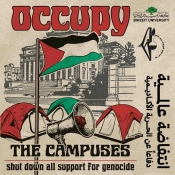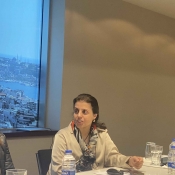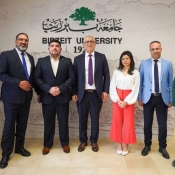LSE Middle East Center launches The Untold Story of the Golan Heights
The London School of Economics and Political Science (LSE) hosted a book launch for The Untold Story of the Golan Heights: Occupation, Colonization and Jawlani Resistance on Wednesday, November 23, 2022. The book is the result of research collaboration between the Israeli Studies master’s program at Birzeit University, the Department of Geography and Environment at LSE and Al-Marsad – Arab Human Rights Center in Golan Heights.
During the book launch, faculty members and researchers from Birzeit University and Al-Marsad participated in a discussion hosted by Dr. Omar Al-Gazzi, professor at LSE’s Department of Media and Communications.
Dr. Michael Mason, director of the LSE Middle East Center, introduced the history of the occupied Golan Heights and the method by which it is addressed in the book. Dr. Muna Dajani, research officer at the LSE Middle East Center, discussed the research methodologies of the book, the solidarity between Palestinians and Jawlanis and the related workshops held at Birzeit University and the Golan Heights. Dr. Omar Tesdell, faculty member at Birzeit University’s Department of Geography, examined the spatiality of the Golan Heights, tackling its social, technological and geographical identities. Dr. Munir Fakher Eldin, dean of the Faculty of Arts at Birzeit, discussed critical approaches to the research, the formation of the Jawlani identity as an act of resistance against colonialism and the six-month strike of 1982.
The Untold Story of the Golan Heights is the first academic study in English of the Syrian community who remained in the occupied Golan Heights following their expulsion in 1967. The research uses ethnography, visuals and poetry to investigate the everyday experiences and the identity of the Jawlanis. The book also covers the Israeli governance in the occupied Golan Heights, the Jawlani rejection of the Israeli rule, the educational system in the Golan Heights, the youth mobilization, the Jawlani collective memory and the creation of Jawlani art as an act of resistance.







